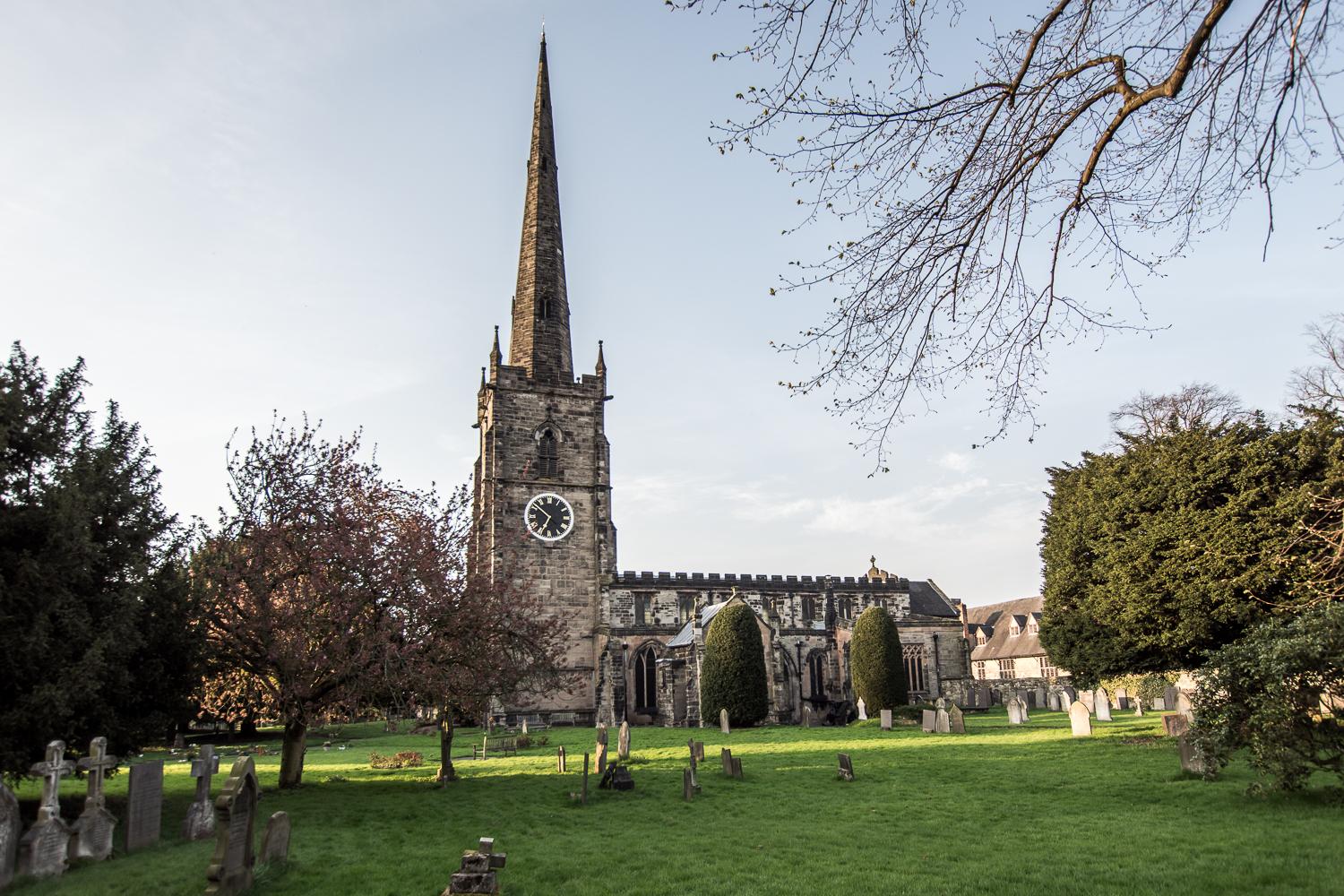St Andrew
Twyford, Derbyshire
A pretty rural church situated on the banks of the River Trent, with a fine, original Norman arch and Maltese Crosses denoting its connection with the Knights Hospitallers.

St Wystan's has a fascinating and complex history, much of it forgotten or misunderstood until Dr Harold Taylor began to study it in the 1930s'.
Repton, Derbyshire
From the outside it is a very handsome medieval church, not unlike so many others in this area.
Its spire is remarkable, immensely tall and thin and dates from the 15th century, as does the tower. It has a clerestory that was built at about the same time. Other features are from the 14th century, including the south porch.
It is at the chancel end of the church, however, that the story becomes so interesting, for here, under the chancel, is a Saxon crypt, complete with beautifully carved stone piers. And much of the chancel is also Saxon, changed and altered many times through the intervening centuries.
For a long time the crypt was entirely forgotten, lost beneath later work and by a ground level that had risen considerably over the years. It was only when a workman fell into it during building work in 1779 that it was rediscovered. The 18th century was a bad time for the church as whole; much of the fabric was altered, and many monuments and fittings mistreated or destroyed. More work was done in the 19th century, some of it to conserve the structure of the building.
Finally, a major restoration of the crypt took place in 1998. The crypt is a vital part of the story of the Saxon kingdom of Mercia, whose capital Repton once was. The crypt was actually a royal mausoleum, where King Aethelbald was buried in 757 and King Wiglaf in 840. Wiglaf 's grandson, Wystan, was murdered in 849 and buried at Repton. Wystan became venerated as a saint, and the crypt became a place of pilgrimage. In the 10th century Wystan's remains were removed to Evesham, and gradually the importance of the crypt was forgotten. Now it is celebrated as one of the oldest places of worship in Britain.
Twyford, Derbyshire
A pretty rural church situated on the banks of the River Trent, with a fine, original Norman arch and Maltese Crosses denoting its connection with the Knights Hospitallers.
Foremark, Derbyshire
St Saviour's was built in 1662 reusing stone from a ruined chapel at nearby Ingleby, and is built in such a convincing style that from the outside only an expert could tell the true date.
Stretton, Staffordshire
Come and see the wonderful colouring in our east windows.